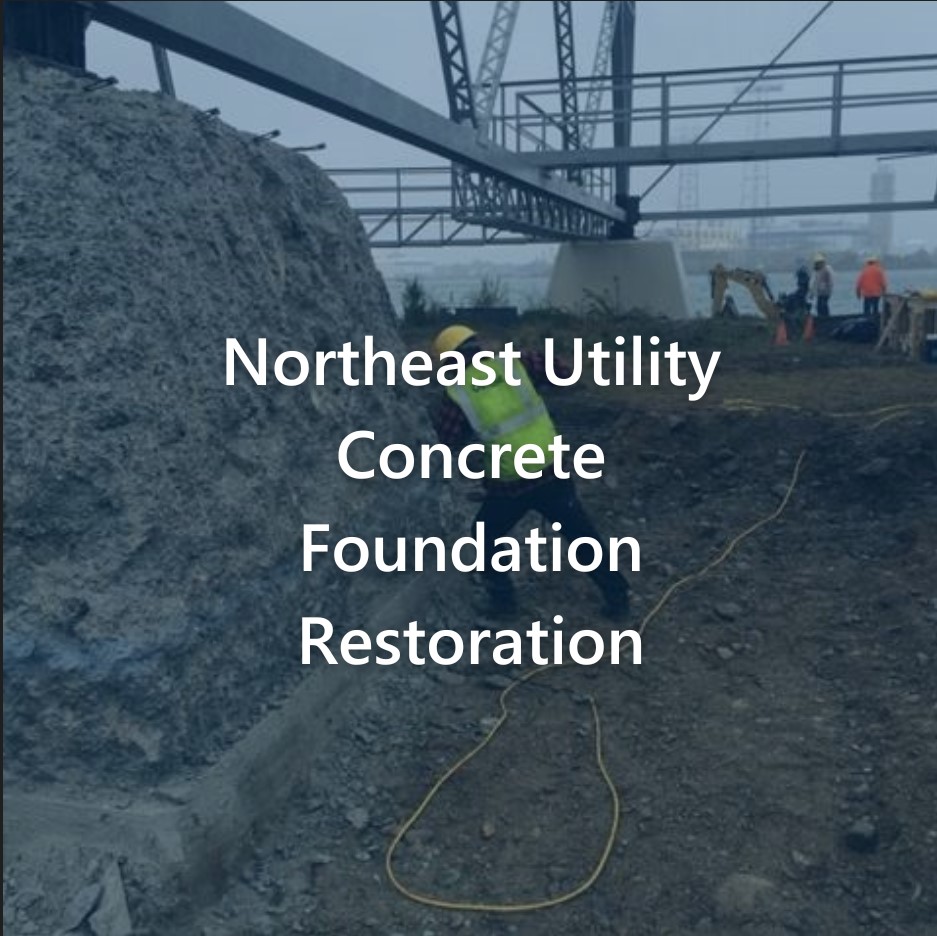Steel Pole and Transmission Tower Restoration
Osmose is the nation’s leading provider of steel resiliency solutions. Life extension measures, including coatings, cathodic protection, and restoration, can be taken to significantly extend the useful service life of these assets. Restoration can save over 80% of the cost of new structures and avoids expensive outages that can reach $1 million per day.
Osmose utilizes proprietary technologies and a highly-skilled workforce to extend the life of a utility’s steel structures through the most cost-effective methods. We provide turnkey solutions for damaged and deteriorating steel structures at a fraction of what total replacement would cost. Whether the structure is directly-buried, on concrete foundations, or in water, Osmose restoration designs are built to restore strength and increase capacity if greater strength is required.
.jpg)
Before
.jpg)
After
Osmose’s structural steel restorations are designed and implemented compliant with American Society of Civil Engineers (ACSE) specifications, and our concrete foundation restoration solutions are designed and implemented in compliance with American Concrete Institute (ACI) standards.
.jpg)
Before
%20(1).jpg?width=662&height=372&name=Picture3%20(2)%20(1).jpg)
After
Common Defects in Transmission Towers and Steel Poles
Because steel transmission towers and poles are constructed to withstand a variety of loads or impacts, such as hurricane winds, heavy snow, extreme temperatures and seismic forces, their structural integrity is critical. We regularly inspect and maintain steel structures to identify and address any defects before they become a safety hazard.
Some common challenges that transmission structures face are:
- Corrosion: Whether external or internal, corrosion can weaken the metal and reduce its load-carrying capacity.
- Fatigue: Fatigue can lead to stress fractures in the metal as a result of wind and other cyclical loading.
- Welding defects: These are manufacturing and construction defects that include incomplete fusion and porosity and can reduce the strength of the structure.
- Buckling: This occurs when steel is subjected to compressive forces and can result in structural collapse.
- Misalignment: Often due to improper installation, misalignment can lead to potential failure points.
Adherence to design and construction codes is critical. While not all of these challenges can be avoided, our technicians ensure high-quality standards are adhered to in each visit and restoration plan.
.jpg)
Why Should You Use Osmose for Your Steel Pole and Transmission Tower Restoration?
Osmose provides turnkey solutions for damaged and deteriorating steel structures at a fraction of what total replacement would cost. Whether the transmission structure is directly buried, on concrete foundations, or in water, Osmose’s proprietary hardening and restoration solutions are built to restore strength and increase capacity if greater strength is required.
Osmose partners with electric utilities to provide a practical, cost-effective, and programmatic approach to accurate inspections (also called assessments), effective mitigation methods, and structural restoration solutions to:
- Extend the service life of steel towers and poles, which qualifies the program as a capital expenditure
- Improve system reliability
- Reduce emergency and unscheduled O&M costs
- Prevent risk and cost of failure or premature replacement of structures
- Avoid service interruptions
Get a free, no-obligation consultation with an Osmose steel structure restoration expert.
.jpg)
How to Capitalize Your Steel Assesment and Life Extension Program
Steel structure assessment and remediation results in structures that are more resilient in weather events, last significantly longer, and cost less to maintain. The outcome is an improved and longer lasting asset that clearly meets the Generally Accepted Accounting Principles (GAAP) and IRS definitions of betterment.
If investments result in betterment, the appropriate accounting approach is to capitalize the cost of those investments and depreciate the capitalized costs over the life of the asset. Relevant FERC case precedents supporting capitalization decisions on analogous programs or program components are generally consistent with GAAP rules for capitalization, confirming the validity of the approach.
Osmose asset betterment programs are a very cost-effective alternative to leaving structures in place to fail and then dealing with the huge replacement costs and necessary line outages that accompany such replacements. Our asset advisory experts are available to support any utility’s operations and finance teams to undertake a successful capitalization program.
.png?width=243&name=Osmose-logo-(white).png)
.jpg)


